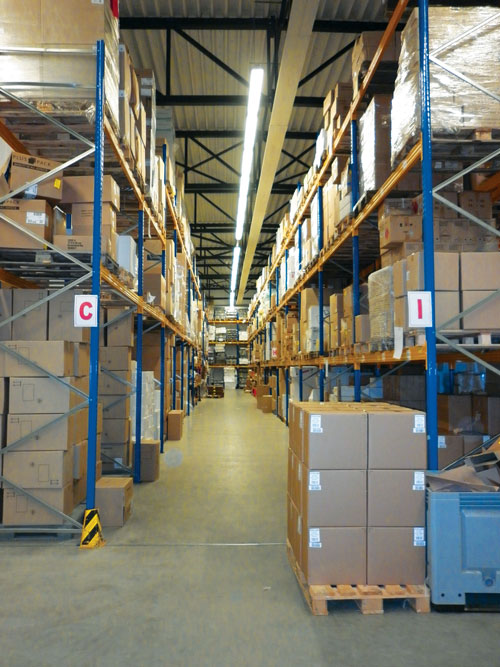Rules on High-Piled Combustible Storage

5 years, 11 months ago

AIA, LEED AP, NCARB
If you store combustible items in your facility, you need to check with your local Authority Having Jurisdiction to see if the International Fire Code (IFC) has been adopted in your location. If so, then Chapter 32, High-Piled Combustible Storage, would be applicable. The IFC dictates the fire protection elements required, as well as the configuration of the items stored such as the maximum height, width, and the aisle space surrounding the storage.
The IFC defines high-piled combustible storage as “storage of combustible materials in closely packed piles or combustible materials on pallets, in racks or on shelves where the top of storage is greater than 12 feet in height. Where required by the fire code official, high-piled combustible storage also includes certain high-hazard commodities, such as rubber tires, Group A plastics, flammable liquids, idle pallets and similar commodities, where the top of storage is greater than 6 feet in height.”
Table 3206.2 outlines the requirements for high-combustible storage based on the commodity class, the size of the area, and the arrangement of commodities being stored. In order to ascertain what is required in your facility, some basic questions first need to be answered. The foremost question is the classification of the goods being stored. The IFC delineates five different categories of commodities, classes I through IV, as well as high hazard. Class I is the lowest hazard.
Class I commodities are noncombustible products on wooden pallets, in corrugated cartons or items in paper wrappings. Only a limited amount of Group A plastics are allowed as outlined in IFC 3203.7.4. Some examples of Class I commodities include: noncombustible metal products, gypsum board, dry insecticides, and foods in noncombustible containers.
Class II commodities are Class I products with combustible packaging. Only a limited amount of Group A plastics is allowed in accordance with 3203.7.4, similar to Class I. Examples of Class II commodities include food in combustible containers and thinly coated fine wire on reels or in cartons.
Class III commodities are wood, paper, natural-fiber cloth, or Group C plastics. A limited amount of Group A and Group B plastics is permissible. Examples include bagged fertilizers, food in plastic containers, and noncombustible liquids in plastic containers having a capacity of more than 5 gallons.
Class IV commodities are Class I, II, and III products that either contain Group A plastics or have Group A plastic packaging. Some examples include combustible metal products (solid), Level 2 aerosols, and oil-based paints in combustible containers.
High-hazard commodities present a greater fire hazard than classes I through IV. Group A plastics that could not be classified in one of the lower categories are included in this category. Examples include commodities of any class in plastic containers in carousel storage, pallets and flats that are idle combustible, rubber tires, lacquers in metal containers that dry by solvent evaporation, and Level 3 aerosols.
Please refer to the IFC for a full listing of items that correspond to the various hazard classes as well as additional information pertaining to the classification of plastics into group A, B, or C. Once the goods in your facility are properly classified you are ready to begin identifying the requirements in Chapter 32.
This is the first installment in a two-part series discussing code issues surrounding high-piled storage. Part 2 will appear in the Winter 2019 edition of the wibi newsletter from Carl A. Nelson & Company.
ABOUT THE AUTHOR
Ellen McCulley graduated magna cum laude with a Bachelor of Architecture from Iowa State University where she received the Pella Architectural Award from the Department of Architecture. She is a registered architect in Iowa and Illinois. Ms. McCulley joined Carl A. Nelson & Company in 2012. Learn more by calling Ellen at 319-754-8415, or write to canco@carlanelsonco.com.
